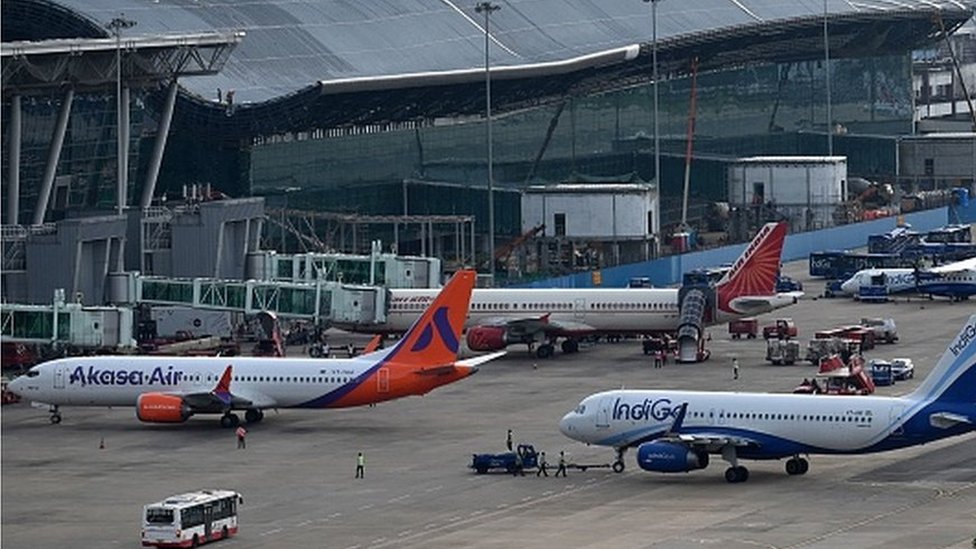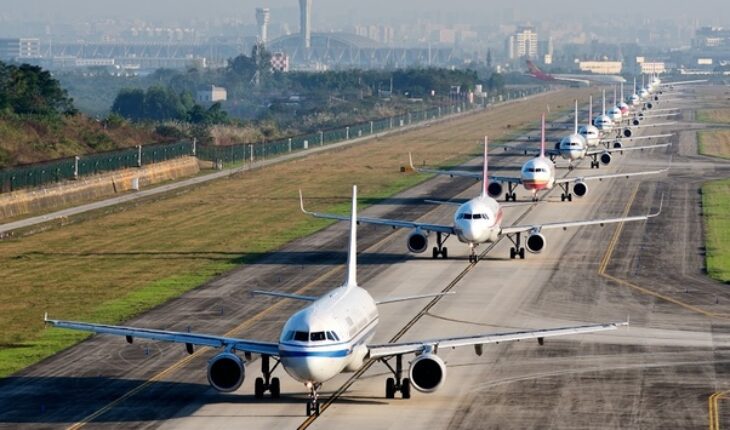
Air travel in India is at an inflection point. More people are flying, and more stuff is being moved around.
Demand for air travel is the canvas on which India’s aviation story is being written. How big is going to be the canvas 30 or 50 years down the line is any body’s guess? But by any measure, we can conclude that we have barely scratched the surface.
Studies estimate that just 10% of the world flies in most years. There are large parts of the world – like say rural India and large parts of the African and South American continent – that are not well connected by air. Estimates peg the penetration of air travel in India at 3-4% with a high proportion of that being repeat flyers.
As incomes rise, growth in air travel (if not impacted by any black swan event) in India should outpace historical performance. Covid has taught us one thing – write off the human intent to travel at your own peril. Air travel demand has roared back with December 2023 global demand levels being at 97.5% of December 2019 levels on a revenue passenger-kilometers or RPK basis. Airports Council International (ACI), the trade association of the world’s airports, projects global air travel to double its current volumes to 20 billion by 2042. India’s market share of global demand is expected to double as well and surpass 3-4% (~600 million trips or 1 billion passengers handled at Indian airports) by 2040 at a CAGR of 7%. Staggering numbers to say the least.
The flip side is the supply
Airport development – we are just not lining up airport infrastructure expansion fast enough to accommodate the 2,000 aircraft (mostly single aisle Narrow body aircraft) that are on order and to be delivered in the next 10 years. Understandably, these are bulk orders for pricing incentives. Practically, the expected deliveries should be discounted and up to 80% of the total orders may be delivered. This is not factoring in new players entering the market. The point is that we are looking at a sizable aircraft induction number.
A ballpark number of 300+ commercial airports and an equable number of airstrips (with limited operations) is required to cater to the anticipated demand. A framework to identify and build airports that are critical to the national infrastructure needs will go a long way to a systematic approach to an important nation building asset. The role of Airports Authority of India needs to be clearly defined as an enabler for providing connectivity to rural and untapped areas.

Greenfield 2nd airports at Delhi and Mumbai are at an advanced stage of development and should be commissioned in the current financial year. Land allocation for 2nd airports (third airport for Mumbai Metropolitan Region) at other major metros must be identified in the near term and the commissioning fast tracked by the State government. The Government should signal the market and build global appetite with advanced notice of the timelines for each tranche of airport PPPs. The timeline of privatisation of the brownfield airports should be accelerated. The global investors and operators are eager to participate in the India story under the right conditions.
Focus on Passenger Convenience – Customer centric solutions should be the sole focus to ease the burden for travelers. Digi Yatra has been a game changer. The adoption of Digi Yatra needs to be encouraged and made available across all ages and airport functions. The experience at the immigration touch point for inbound international travelers can improve. Delays during the peak travel season exceed the acceptable service level standards due to the lack of manpower and the delay in adoption of technology. Egates and biometric passports are going to be rolled out.
What is the elephant in the room that we are not addressing? The growing cost of CO2 mitigation – a line item that as a percentage of overall operating cost for all aviation entities will increase substantially with rapidly growing emissions. Between 1990 and 2019, both passenger and freight demand has approximately quadrupled while as emissions have only doubled due to improved design and technology of aircraft and net zero ambitions of the airports.
Decarbonizing aviation will not be easy. With that being said, we are moving in the right direction.
The commitment that Indian airports and airlines have shown to sustainability and reduction in the carbon footprint has been commendable. 66 Indian airports are now operating on 100% green energy. Two of India’s busiest airports have achieved the highest Level 4+ Carbon Accreditation of ACI.
With an average fleet age of under 4 years and for a large and growing fleet (300+ and counting) of modern aircraft, Indigo’s commitment to sustainability, and reducing its carbon footprint is evident. Air India with its large aircraft order of 470 new age aircraft should be able to meet its sustainability goals in a few years.
We need to do more. Technologies are evolving but not at a fast enough pace to make a serious dent to the magnitude of the impact. Biofuels and other alternatives are just a tiny fraction of global demand. To succeed in meeting any target for adoption of Sustainable Aviation Fuel (SAF), will require the coordinated efforts of the entire industry (airlines, airports, air navigation service providers, manufacturers) and significant government support.
The ball is in our court…we need to do more!
Author is the Managing Director of Avinia . Debayan has over two decades of experience in airport and transportation infrastructure consulting spanning several key markets. He is a specialist in strategic and master planning, capital investment and optimisation, air quality and noise impact, market and commercial forecasting and operational efficiency/cost optimisation. Prior to founding Avinia, Debayan was the India practice leader at Landrum & Brown






